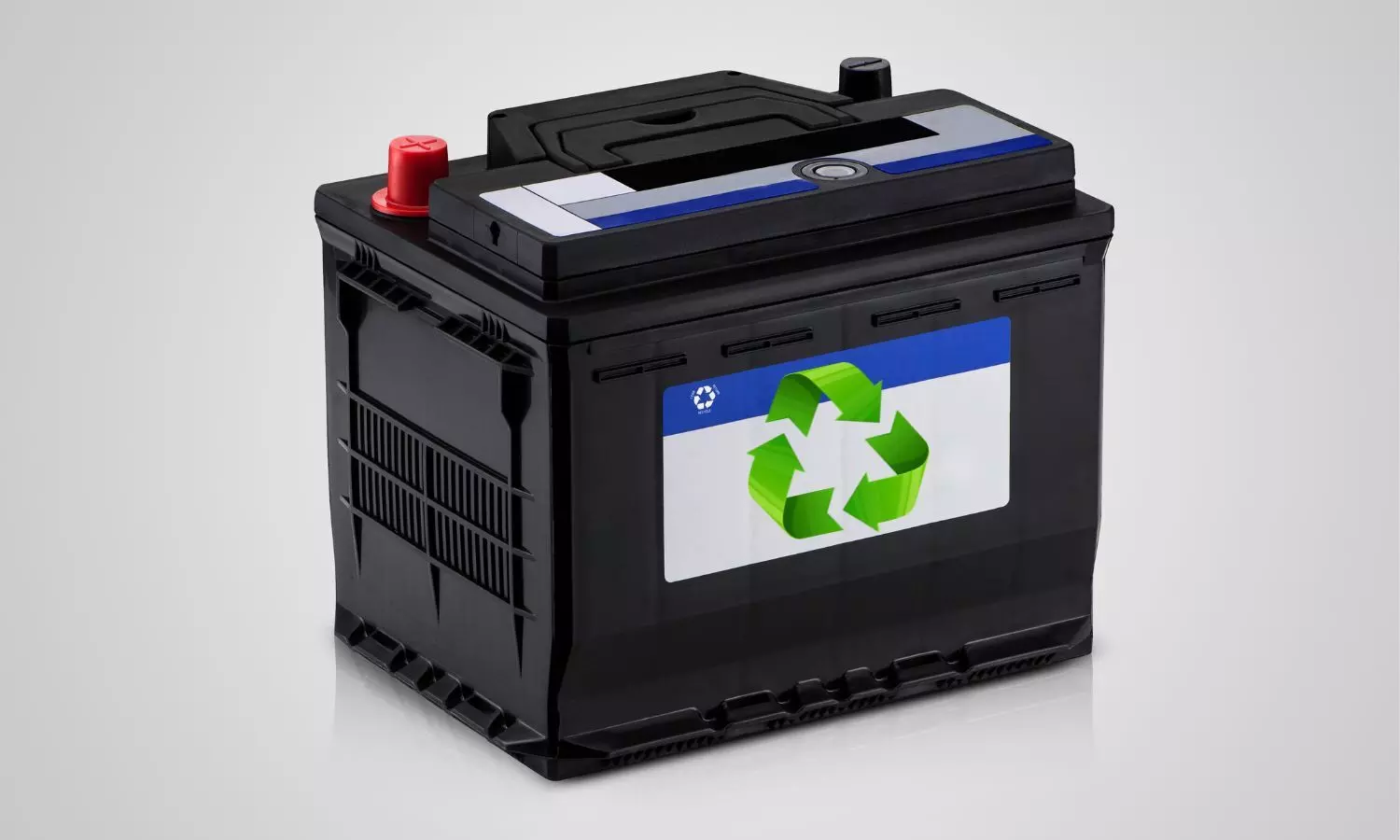Live
- Celebrate the Festive Spirit of Dasara with Exclusive Offers and Exciting Family Experiences at Wonderla Hyderabad!
- Design Democracy 2024 Kicks Off - Redefining Design, Art, and Innovation
- Maruti Suzuki associates with Indian Air Force for the Vayu Veer Vijeta Car Rally To Honour The Courage And Valor Of Fallen Heroes
- Supreme Court raises eyebrows over LG's 'interference' with MCD Standing Committee election
- GST panel deliberates on lowering rate on health insurance, tractors
- Aindrila Ghorai Revolutionises Healthcare Service Automation
- Indian cricket team focuses on rhythm and flow in intense fielding drill ahead of India vs Bangladesh first T20
- Navratri Day 2: Celebrating Maa Brahmacharini – A Symbol of Perseverance and Devotion
- The changing face of Tirumala's silk robes ritual
- Rs 20, 10 notes disappear from circulation
Just In
The Environmental Impact of Battery Rejuvenation: Benefits and Challenges


With a strong emphasis on sustainability, rejuvenation presents innovative solutions that not only increase battery lifespan but also decrease the environmental impact of production practices.
As environmental concerns and sustainable practices increase, battery rejuvenation is quickly becoming a crucial strategy to mitigate ecological harm while simultaneously improving resource efficiency.
But how exactly does battery rejuvenation translate to a greener future?
Battery rejuvenation, particularly for lead acid batteries, offers numerous environmental and economic advantages. The Electro-Chemical Battery Enhancement Process (EBEP) provides a solution for recovering lost potential in lead-acid batteries. This technology works with any lead acid battery, including VRLA, AGM, Gel, and flooded batteries, regardless of brand, size, or age, as long as the battery remains mechanically intact. By addressing sulphation, which is responsible for 80% of premature lead acid battery failures, this process can extend a battery's useful life by at least a year, restore backup time, and optimise overall performance.
This advanced restoration process also helps mitigate the environmental impacts associated with battery disposal and production. When lead acid batteries are discarded, harmful substances can contaminate soil and water, while the disposal process releases toxins and methane, contributing to global climate change. By rejuvenating batteries, technology today delays the need for disposal, reducing the demand for new batteries and preventing additional environmental harm.
Battery rejuvenation represents an essential step toward a circular economy in which resources are conserved, and products remain useful for longer. It complements ongoing efforts to decrease ecological costs associated with battery production - including lithium and cobalt mining - by minimising new raw material requirements while conserving energy that would otherwise go towards manufacturing new batteries. Battery rejuvenation offers significant economic cost reduction benefits while simultaneously lowering environmental impacts. With such extensive advantages at hand, rejuvenation stands as a powerful tool in supporting sustainability while simultaneously mitigating both economic costs and environmental impacts.
Challenges and Considerations
Battery rejuvenation offers a promising path towards a more sustainable future; however, certain challenges must first be met in order to be effective. The effectiveness of rejuvenation processes depends on various factors, including battery chemistry, degradation rates, and techniques employed. Current rejuvenation techniques have shown more success with lead-acid batteries. At the same time, ongoing research and development efforts aim at refining and standardising rejuvenation methods that dominate EVs and renewable energy storage applications.
Robust safety protocols and quality control measures are necessary to ensure rejuvenated batteries provide safe and reliable performance, building consumer trust in this technology. Research should focus on creating clear guidelines and testing procedures to build consumer confidence in this approach. However, long-term durability issues remain with these batteries when used in applications like electric vehicles.
The Road Ahead
Battery rejuvenation stands at the intersection of environmental sustainability and technological advancement. By increasing battery lifespan and decreasing production's environmental impact, rejuvenation offers compelling, evidence-based solutions to creating a more sustainable world. As research and development efforts further refine rejuvenation techniques, this technology may revolutionise how we use power storage.
Businesses dedicated to innovative energy solutions like yours have an opportunity in battery rejuvenation for themselves and society at large. Even though your organisation might not directly deal with electric vehicle batteries, battery rejuvenation still contributes towards building more sustainable futures by supporting its development and adoption. By investing in research or partnering with manufacturers on creating rejuvenated batteries for use within operations or simply encouraging their use among your workforce, you can show your dedication to environmental responsibility as well as foster positive changes within the energy industry.
In the end, battery rejuvenation undoubtedly holds the promise of creating a sustainable future and should be seen as the cornerstone of that shift. By adopting this innovative technology, we can reduce our reliance on fossil fuels while minimising our environmental footprint and creating a cleaner planet for generations to come.
(This article is authored by Mr. Kavinder Khurana, Managing Director- Energy and Fire Tech India Private Limited)

© 2024 Hyderabad Media House Limited/The Hans India. All rights reserved. Powered by hocalwire.com






